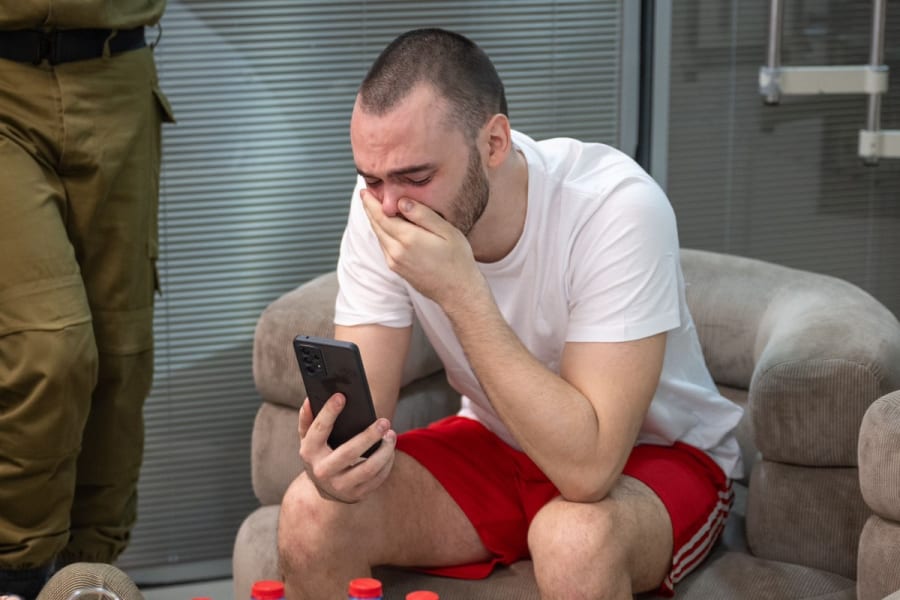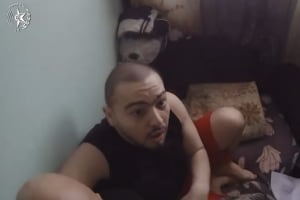Details arise on how freed Israeli hostages suffered punishment, psychological abuse during Gaza captivity
According to a WSJ report, the three men were forced to live in a single dark room while sleeping on mattresses on the floor

Israeli special forces rescued the Israeli hostages Almog Meir Jan (21), Andrei Kozlov (27) and Shlomi Ziv (40), as well as female hostage Noa Argamani (25) who was kept in a separate building on Saturday.
For six long months, Jan, Kozlov and Ziv suffered punishments, fear and isolation from the outside world, according to a Wall Street Journal report. During the difficult months of captivity, the three men were reportedly forced to live in a single dark room while sleeping on mattresses on the floor.
The guards, who were the hostages' only connection to the outside world, gave them some food and delivered punishments whenever they felt that the hostages did not follow their strict rules. Punishments reportedly included being locked up in the bathroom or deliberately placing blankets on the hostages during hot days.
Furthermore, the captors also allegedly abused the hostages psychologically by threatening to kill them. In addition, the hostages were told that nobody cared about them anymore.
Dr. Itai Pessach, who treated the freed hostages at Sheba Medical Center, revealed that the hostages were beaten physically “almost every day” during their long captivity in Gaza.
“We’ve heard stories that are beyond anything you can imagine,” Pessach said.
The three male Israeli hostages supported each other, which helped them endure the long months of isolated captivity.
“They supported one another, even down to the level of telling each other stories and helping each other shave, the little things,” said Geut Elgrabi, the sister of former hostage, Jan.
“Andrey taught them Russian and they learned Arabic together and kept each other busy,” she added.
Kozlov’s father Mikhail said, "Andrey is in relatively good condition; he talks and shares with us what happened," However, the doctor who has treated other former hostages, noted that most of them went through “physical and mental torture.”
The mental wounds and trauma will take time to heal, according to Pessach. He believes that the temporary adrenaline in their bodies during the escape and the joy of being released likely made the hostages initially appear to be in a better condition than they actually were.
Jan’s uncle, Aviram Meir, noted how pale the three hostages were when they arrived in Israel.
“They hadn’t seen the sun for eight months,” he said.
Following the dramatic rescue operation, the Israeli military revealed that the Gaza-based journalist and Hamas terrorist Abdullah al-Jamal was one of the captors.
“After investigations by the IDF and Shin Bet, it can be confirmed that Abdullah al-Jamal was an operative of the terrorist organization Hamas, who held the abductees Almog Meir, Andrey Kozlov and Shlomi Ziv in his family home in Nuseirat,” the IDF stated.
“This is further proof that the terrorist organization Hamas uses the civilian population as a human shield,” the military added.
While Israelis celebrate the rescue of four hostages, about 120 Israeli hostages are believed to still be in captivity in Gaza, with their current status unknown.
Middle East political analyst Younis Al-Zuraie believes Hamas will likely increase its security procedures regarding the remaining hostages.
“They will likely ensure that no more than one hostage is in the same location and will move hostages frequently to avoid detection. Their security apparatus will manage these arrangements,” Al-Zuraie noted.
Also, the New York Times reported on Monday that Hamas guards have been ordered to kill hostages if an IDF rescue attempt detected.
According to Israeli officials cited in the report, terrorist leaders have told their operatives guarding hostages that "if they think Israeli forces are coming, the first thing they should do is shoot the captives.”

The All Israel News Staff is a team of journalists in Israel.
You might also like to read this:














